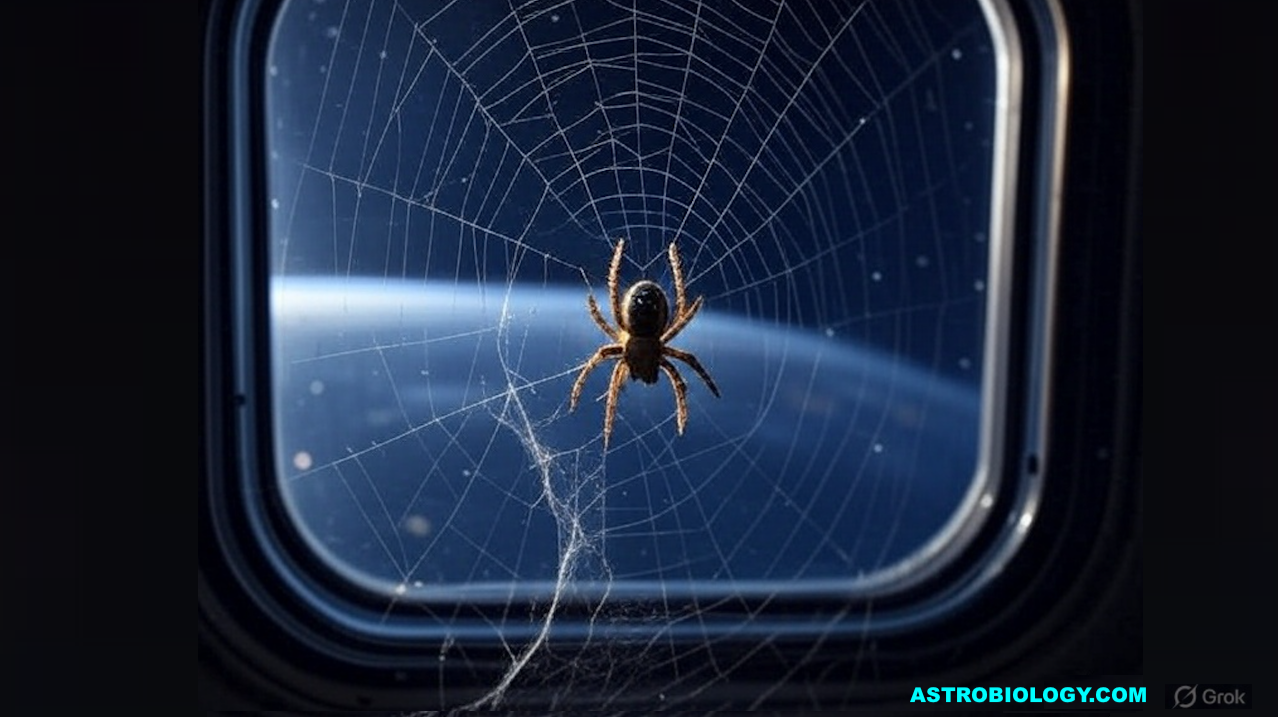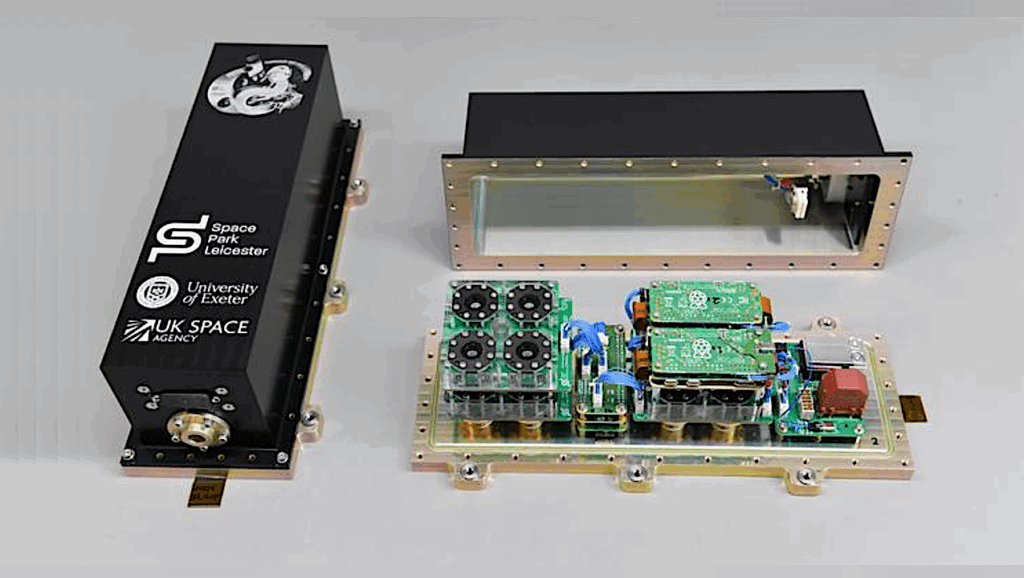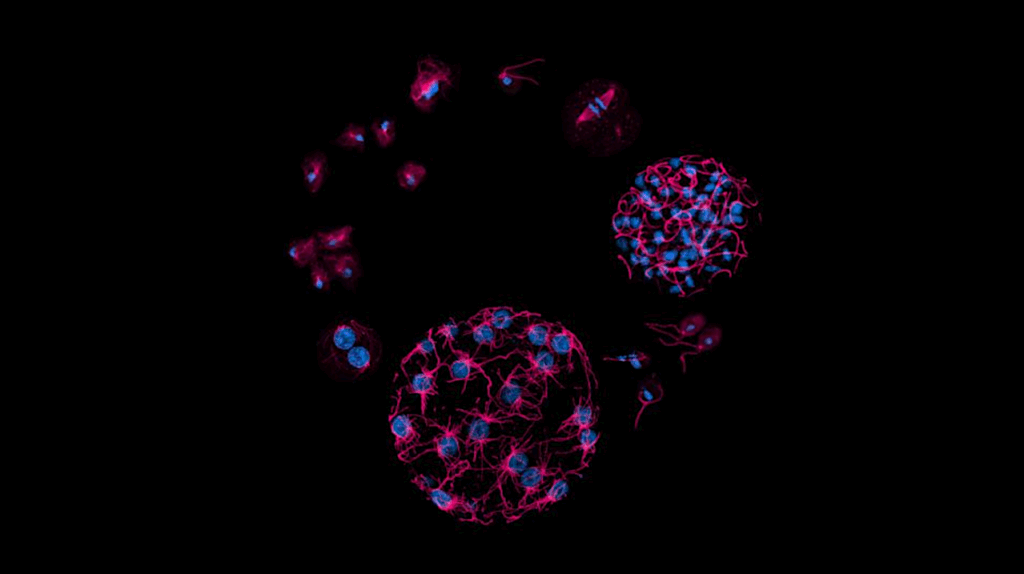NASA Spaceline Current Awareness List #1,175 21 November 2025 (Space Life Science Research Results)

NASA Spaceline Current Awareness List — Grok via Astrobiology.com
The abstract in PubMed or at the publisher’s site is linked when available and will open in a new window.
Papers deriving from NASA support:
- Douglas GL, Bell ST, Roma PG, Oswald T, Young M.Food acceptability and selection by astronauts on International Space Station missions informs strategies and risks for deep space exploration.Front Psychol. 2025 Oct 29;16:1562044.Note: This article is a brief research report and may be obtained online without charge.
Journal Impact Factor: 2.9
Funding: “This study was supported by the NASA Human Research Program, Human Health Countermeasures Element. PR and TO were supported by KBR’s Human Health and Performance Contract NNJ15HK11B through NASA.” - Roberts BM, Deane CS, Szewczyk NJ, Fajardo VA, Maden-Wilkinson T, Bagley JR.Musculoskeletal responses to spaceflight: Mechanisms, countermeasures, and key gaps.Am J Physiol Cell Physiol. 2025 Nov 11. Review. Online ahead of print.Note: This article may be obtained online without charge.
Journal Impact Factor: 4.8
Funding: “We dedicate this manuscript to Dr. Szewczyk, who passed away prior to submitting this manuscript. We would also like to extend our sincerest thanks to all AWG members and the broader scientific community around NASA Open Science Data Repository, GeneLab, and the NASA Ames Life Sciences Data Archive. Their contributions, dedication, and unwavering commitment to our shared success are essential to future research.” - Love K, Nibhanupudy TJ, Rosenberg MJ, Galvan-Garza RC, Clark TK, Karmali F.Sensorimotor function may be fundamentally limited in hypogravity.J Appl Physiol (1985). 2025 Nov 14. Online ahead of print.Note: This article may be obtained online without charge.
Journal Impact Factor: 3.3
Funding: “This research was generously supported by awards from the Office of Naval Research through the Multiple University Research Initiative (N000142012163), NIH/NIDCD (R01-DC018287S1), and NASA via the National Space Biomedical Research Institute (SA03401).” - Stegeman L, Slaba TC, Huff JL, Semones E, Zawaski JA, Saha J.Utilizing the Life Span Study data in NASA astronaut cancer risk assessment.Carcinogenesis. 2025 Nov 19;46(3):bgaf076.Journal Impact Factor: 2.9
Funding: T.C. Slaba and J.L. Huff are affiliated with NASA Langley Research Center. E. Semones, J.A. Zawaski, and J. Saha are affiliated with NASA Johnson Space Center. - Hitt ME, Cai S, Nix G, Patel S, Tsay LS.Balancing nutrient content and nitrate levels in space agriculture: Investigating LED light and CO2 effects on space-grown leafy green vegetables.Gravit Space Res. 2025 Nov;13(1):103-20.Note: This article may be obtained online without charge.
Journal Impact Factor: 0.8
Funding: “This work is supported by NASA under Award No. 80NCCS22M0125.” - Britten RA, Tamgue EN, Arriaga Alvarado P, Fesshaye AS, Sanford LD.A two-hit model of executive dysfunction: Simulated galactic cosmic radiation primes latent deficits revealed by sleep fragmentation.Life. 2025 Nov 6;15(11):1717.PI: R.A. BrittenNote: This article is part of Section “Astrobiology” (https://www.mdpi.com/journal/life/sections/astrobiology) and may be obtained online without charge.
Journal Impact Factor: 3.4
Funding: “This work was funded by NASA grant support NNX14AE73G and NNX16AC70G.” - Connolly MG, Fliflet AM, Ravi P, Rosu DI, Boppart MD, Rhodes JS.Exercise-induced plasma-derived extracellular vesicles increase adult hippocampal neurogenesis.Brain Research. 2025 Dec 15;1869:150003.PI: M.D. BoppartJournal Impact Factor: 2.6
Funding: “Beckman Institute Graduate Student Fellowship (to AMF); Translational Research Institute for Space Health (TRISH) Award (T0701) under a Cooperative Agreement with NASA (NNX16AO69A) (to MDB).” - Palomino L, Opdensteinen P, Sanchez I, O’Hara R, Kim HS, Smith PJO, Gonzalez-Gamboa I, Deng X, Steinmetz NF, Pokorski JK.Polynorbornene spray coating to enhance plant health.ACS Materials Letters. 2025 Oct 25;3827-34.PI: P. OpdensteinenJournal Impact Factor: 8.7
Funding: “This research was primarily supported by NSF through the UC San Diego Materials Research Science and Engineering Center (UCSD MRSEC) DMR-2011924. P.O. was supported in part through a TRISH postdoctoral fellowship by the Translational Research Institute for Space Health (TRISH) through NASA Cooperative Agreement NNX16AO69A.”
Other papers of interest:
- Alireza Mortazavi SM, Hassan Vafapour, Razi Rashidfar, Zeynab Seyeddi, Najmeh Jooyan, Fatemeh Bensaeid, Lembit Sihver, James Welsh.Astronaut health in space: Bio-defenses against radiation and microgravity.In: Letizia Terranova M, ed. Radioactivity in Life Sciences (1st ed). New York, NY: Jenny Stanford Publishing, 2025. p. 38.
- Bailey DM, Blottner D, Gunga HC, Schneider S, Wotring V, Baatout S, Durante M, Olde Engberink RHG, Goswami N, Heer M, Liphardt AM, Monici M, Pagnini F, Stern C, Stukenborg JB, Weber T, Vico L, White O, van Ombergen A, Choukér A.Integrative focus on the space exposome-integrome: Physiological challenges and practical limits of countermeasures beyond low Earth orbit.npj Microgravity. 2025 Nov 20;11:82. Review.Note: This article may be obtained online without charge.
- Fiedler B, Phillips T, Lawand JJ, Noorbakhsh C, Ghali AN, Hauck J, Ahmed AS.Bone health in spaceflight: Incomplete bone mineral density convalescence at 1-year postmission without increased fracture risk.J Am Acad Orthop Surg Glob Res Rev. 2025 Nov 17;9(11):e25.00155.Note: From the Methods section: “A retrospective cohort study was conducted to compare and quantify the changes in BMD after return to Earth among astronauts based on (1) the length of space flight missions, and (2) the age of the astronauts was developed following approval by the Institutional Review Board. A total of 94 astronauts met inclusion criteria. Of the 94 astronauts 31 were older than 45 years and 39 flew on missions for greater than 6 months. The Lifetime Surveillance of Astronaut Health (LSAH) epidemiology database at NASA was queried to provide dual-energy radiograph absorptiometry (DEXA) data of astronauts for preflight, 5-day return, 6-month return, 1-year return, 2-year return, and 3-year return from spaceflight data.” This article may be obtained online without charge.
- Mansouri F, Barros AN, Bordoni L, Fedeli D, Pontetti G, Roncolato E, Mannozzi C, Pompei F, Vittori S, Pettinelli E, De Miranda NG, Gaivão I, Gabbianelli R.Comparative analysis of Brassica rapa var. cymosa grown in hydroponic condition, lunar maria, and lunar highland regolith simulants: Biochemical profiling and effects on Drosophila melanogaster as an in vivo model.Life Sci Space Res. 2025 Nov 17. Online ahead of print.
- Cole VM, Savulescu J, Illanes SE, Batiz F, Benny PAT, Huang Z, Carter SWD, Choolani MA, Kemp MW.A biological and ethical assessment of whether humans could or should reproduce in space.npj Microgravity. 2025 Nov 17;11(1):80. Review.Note: This article may be obtained online without charge.
- Wu D, Tang W, Wang J, Zhao Y, Duan L, Kang Q.On Chinese space station: Pioneering space experiments unraveling the hydrodynamic instability of annular thermocapillary convection.Sci Rep. 2025 Nov 19;15:40886.Note: This article may be obtained online without charge.
- Park J, Ulla A, Uchida T, Lee S, Tsuda H, Ishige Suzuki T, Hashizume T, Higashibata A, Park R, Kobayashi T, Sokabe M, Choi I, Nikawa T.Celastrol and Cblin peptide activation of IGF-1 signaling prevents microgravity-induced atrophy in rat L6 myotubesAm J Physiol Cell Physiol. 2025 Nov 18. Online ahead of print.Note: This article may be obtained online without charge.
- Wu Q, Ji X, Wu J, Li Y, Hui Z, Wang H, Shang L, Yin J.In-situ NIR spectroscopy study on microgravity-induced articular cartilage degeneration with ResNet-18.Spectrochim Acta A Mol Biomol Spectrosc. 2026 Mar;348(Pt 1):127188.Note: Hindlimb unloading study.
- Yu X, Li J, Wang Y, Zhou J, Li X, Ding L.Dynamic changes in ocular and retinal function across acute hypobaric hypoxia.Life Sci Space Res. 2025 Nov 20. Online ahead of print.
- Chen A, Wang Q, Sheng X.Actin depolymerization by Latrunculin B can either suppress or promote root gravitropism, depending on the developmental stages in Arabidopsis.Plant Signaling & Behavior. 2025 Dec 31;20(1):2581654.
- Abad Santos JC, Garimella SS, Khanchandani AN, Shah PS.Rapid optimization of a light-inducible system to control mammalian gene expression.JoVE. 2025 Nov 4;(225):e68779.Note: From the abstract: “Inducible gene expression tools can open novel applications in human health and biotechnology, but current options are often expensive, difficult to reverse, and have undesirable off-target effects. Optogenetic systems use light-responsive proteins to control the activity of regulators such that expression is controlled with the ‘flip of a switch.’ This study optimizes a simplified light activated CRISPR effector (2pLACE) system, which provides tunable, reversible, and precise control of mammalian gene expression. The OptoPlate-96 enables high-throughput screening via flow cytometry for single-cell analysis and rapid optimization of 2pLACE.”
- Trinca TM, de Navascués J.Drosophila melanogaster: An old and future ally to radiobiology.J Radiat Res. 2025 Nov 14. Online ahead of print.Note: This article may be obtained online without charge.
astrobiology, Microgravity, space biology, space medicine, space station, spaceline,








